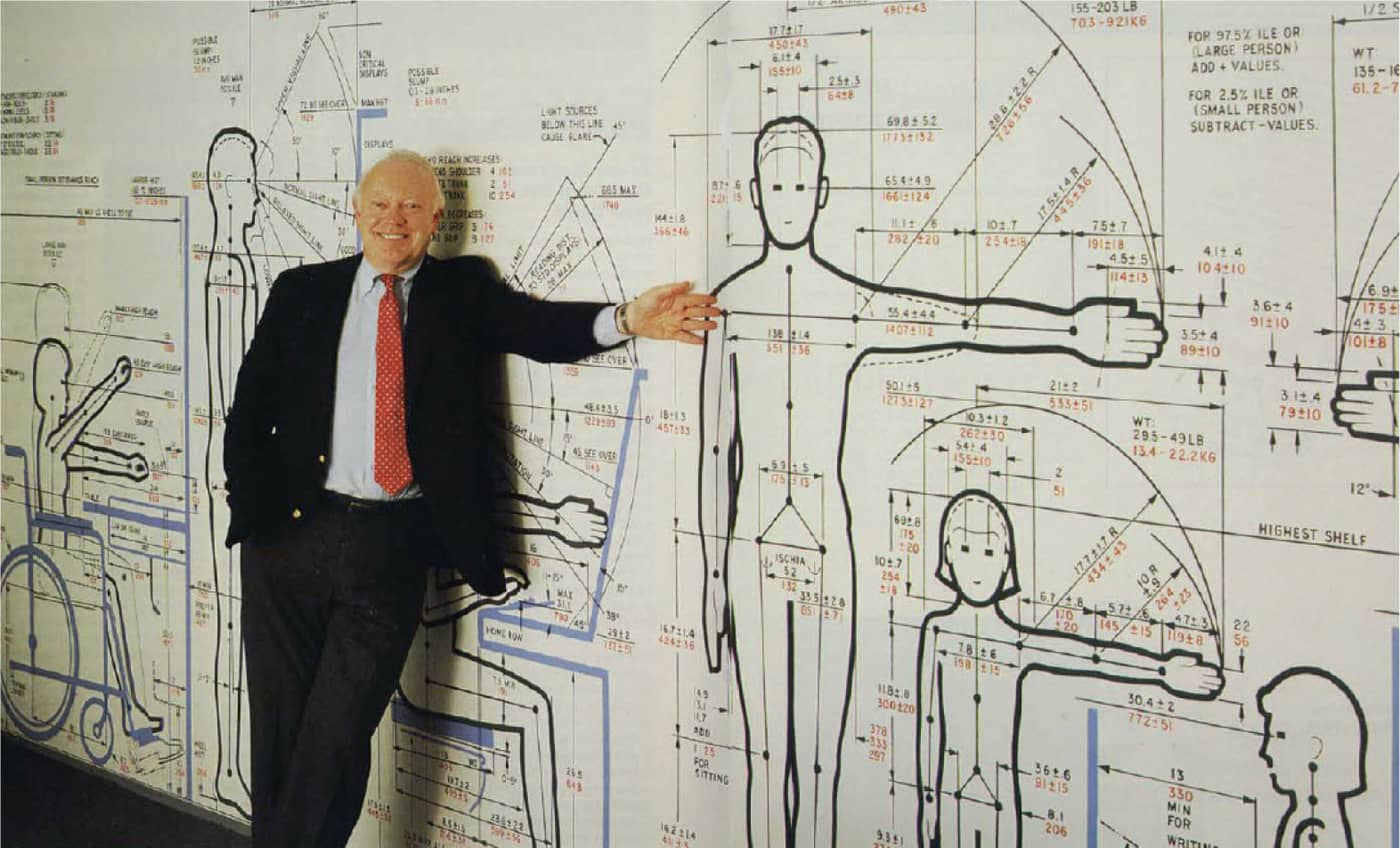46 Human Scale
The physical qualities of the human body expressed in dimensions, capabilities, and limits.
How we interact with our environment is based on the physical and sensory capabilities of the human body. In the built environment, both new and renovated, interiors and functional elements such as the width of doorways, the minimum rise and run of stairways, the location of railings, the positioning of light switches, or the height of work surfaces are scaled to humans. Other sensory decisions include lines of sight through a space, the acoustic properties of a room, and adequate lighting for tasks.
Creating a human-scale interior environment involves making sure that elements are of a shape and size that is comfortable and reasonable for an average person to interact with. This is not without its own problematic issues, as insistence on the “ideal” or “average” ignores the reality of our able-centric world. Any discussion of human scale should include accommodations for different body types and levels of accessibility.

Leonardo Da Vinci’s Vitruvian Man (1487) is based on the correlation of geometry and ideal human proportions as described by the ancient Roman architect Vitruvius.

The kitchen is the most utilitarian room in a home. The placement of equipment and storage is based on human scale and interactions with the components of the room. This Parisian apartment by SABO project demonstrates this concept with a galley kitchen that integrates appliances and cabinetry in a minimal birch plywood.

The Humanscale Manual by Henry Dreyfuss Associates, originally published between 1974 and 1981, is a quick reference guide for designing objects, interactions, and environments for humans with over sixty thousand measured diagrams.
